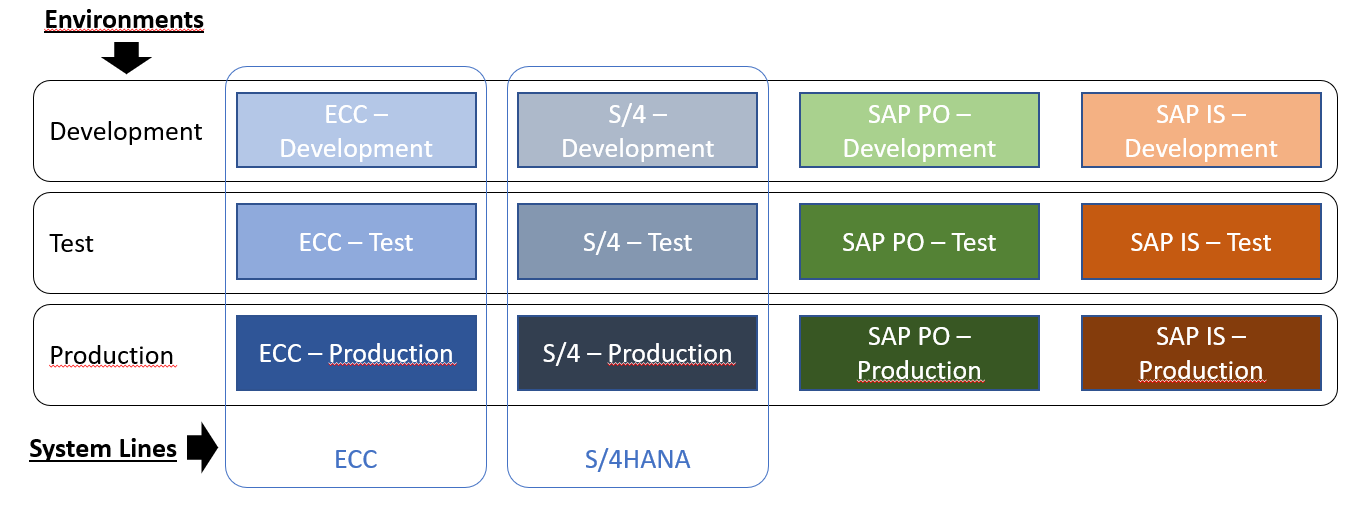Int4 Suite Internal Organization
Internal Organization
This documents outlines the internal organization of Int4 Suite and the foundational components that enable it's features.
Environments and System Lines
The Int4 Suite requires some basic details about your system landscape to connect the logical structure of your environment with the actual systems under test. During the testing it would enable Shift Left or Test Driven Development by triggering test cases to different environments that they were initially created.
This is done through the concept of System Lines and Environments and configured RFC/HTTPS connections for every system under test taken into the matrix.
System Lines are used to group related “business system families.” For instance, in a basic ECC-to-S/4HANA migration, you would set up one System Line representing ECC and another representing S/4HANA.
Importantly, System Lines do not include integration platforms themselves—they only refer to the business/application systems (ERP, CRM, etc.).Environments represent the various environments in the system landscape, typically "Development", "Test" and "Production". In the configuration of Environment you specify the integration platform that links business systems.
Note that only one integration platform instance per technology can be assigned to an Environment. For example, in case of an upgrade project, (e.g. PO 7.4 to PO 7.5), it is generally required to have twice as many environments, such as: "Development74", "Test74" "Production74", "Development75", "Test75" and "Production75". This might not apply if the integration platforms are based on different technologies.Connections - for each instance of business system under test (not virtualized) you can specify RFC/HTTPS connection. This assignment applies to each Environment–System Line pair.

Example of System Lines and Environments for a typical S/4 Migration project with SAP PO and SAP IS (CPI)
Automation Objects
Int4 Suite features a distinctive separation between test data and test configuration.
Int4 Suite is built around the concept of Automation Objects - entities that contain configuration for each test execution step. Automation Objects define the interface under test, test conditions, and necessary data manipulation employing a Variable concept. Automation Objects can also point to other objects (UI scripts, database validation definitions, and more - as documented).
Automation objects are reused by test cases.
Read more about them in the dedicated section of this manual: Automation Objects
In Int4 Messenger automation objects are encapsulated in Service Virtualization Objects
Test Cases
A test case is a basic unit that represents the data for a single test execution. Test case is executed within the context of the assigned Automation Object in a specific Environment. System Line information is read from the Automation Object and may trigger additional validation steps, specifically the Database Validation.
Test creators can link test cases into scenarios, enabling the testing of complex, multiple-step flows, such as the Order-To-Cash process.
For more details on test cases and scenarios, please refer to sections: Test Cases and Testing scenarios and flows
